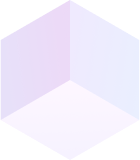Frequently Asked Questions
Welcome to our question bank, you’ll find a resolution to most of your queries here:

Contact Our Customer Support
Get 24 x 7 support from our dedicated team who will be guiding you through any queries or concerns you may have
Light Calculator
Room
Room Dimensions
Room Length (ft)
Room Width (ft)
Ceiling Height (ft)
Product
Product

Enter Details Above to View Calculator Results
